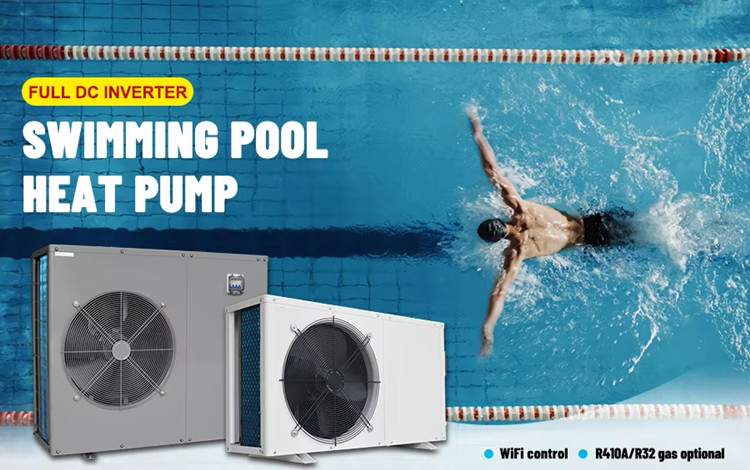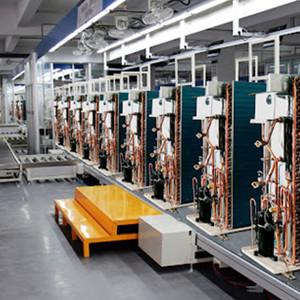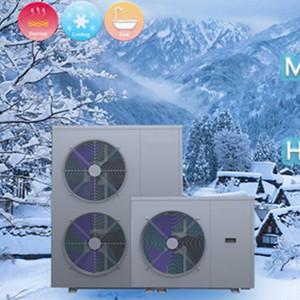How to Size a Swimming Pool Heat Pump
If you've landed on this page, there's a good chance you're considering installing a heat pump. From unparalleled energy efficiency to the ability to heat your pool with or without sunlight – there are countless benefits to a heat pump pool heater.
Of course, in order to get the most out of a heat pump, it's important to choose one that's suitable for your usage conditions. Doing this ensures you get the most consistent and cost-effective performance from your heater.
It needs to be the right size.
But don’t worry, just think about a few simple things beforehand. In this article, we’ll cover everything you need to know about designing a pool heat pump for your swimming pool.

What to consider
1. Your pool size
The size of your pool is one of the most important things to remember when sizing your pool heater. This is because the amount of water the heat pump needs to heat (the size of the pool) is directly related to the power it requires.
So, by this logic, the larger (volume) your pool, the more powerful/larger your heat pump should be. When you size your pool heat pump, you will need the surface area of your pool, which is easy to find and explained later in this article.
That said, while pool size is important, it's not the only factor to consider.
2. Where you live (climate)
Just as important as the size of your pool is where you live. Specifically, climate.
If you live in an area with warm weather year-round, your pool heat pump won't have to work as hard most of the time. For those with average-sized pools, a smaller to standard-sized pool heat pump would be ideal.
On the other hand, for pool owners who live in the north or have more diverse climates, the situation is a little different. If your pool must withstand all four seasons, it's important to know the temperatures during the swimming season.
This is because of the way pool heat pumps work. Because they trap natural heat in the air, they tend to perform best in warmer climates.
But even in cold weather, a heat pump can still do its job. It just works with less heat to boot, so to compensate, it works a little harder. In fact, the average heat pump design can operate with an outdoor temperature of around 30 degrees, while most other heat pumps typically stop operating around 50 degrees.
In fact, pool heat pumps are designed to run until around 30 degrees, while most other heat pumps typically stop running around 50 degrees. Pool heat pumps with advanced low-temperature capabilities can help pool owners in cold climates extend their pool season.
3. So given your location and pool size, what else do you need to consider?
Your swimming habits.
Will they be factored into the actual calculations required for heat pump sizing? Not really.
But if you go to the pool almost every other day, heating speed may be important to you.
Well, the stronger the pool heat pump, the greater the heating capacity. So even if you're already in a fairly warm climate, sometimes it makes sense to opt for a sturdier unit if you're in the pool a lot and have extra room in your budget.
Of course, swimming pool heat pumps are inherently designed to provide resilient, reliable heating in a variety of climates. So even with a standard-sized heat pump, you can’t go wrong.
On that note, let’s talk about why you’re here.
How to size a pool heat pump? What size pool heater do I need?
You may not realize it, but you're already halfway there. Yes, you have 60% of the information you need to know about pool heat pump sizing, given your pool size and location.
Of course, you still need to do some math for accuracy. But don't worry, it's a very simple formula.
How to Size a Pool Heat Pump
1.) Determine the hottest temperature you want to heat the water to. This is your target temperature
Example) Target temperature is 80 degrees
2.) Find the average temperature of the coldest month of the year where you live
Example) If you live in Florida, the coldest average temperature during swimming season is probably 60 degrees
3.) Subtract the coldest average temperature from the target temperature
Example) 80 degrees (target temperature) – 60 degrees (coldest average temperature) = 20
20 degrees is your temperature rise
4.) Calculate pool/surface area size
Calculate the surface area of your pool using this formula: Width x Length = Surface Area
Example) 15 feet x 30 feet = 450 square feet (surface area/pool size)
5.) Calculate the amount of heat (BTU) required to heat your pool
You already have all the numbers you need, so the formula is:
Pool surface area x temperature delta x 12 = required BTUs
Example) 450 x 20 x 12 = 108,000 BTU
Based on the example above, a heat pump size of at least 108,000 BTU or higher would be a good choice.
Conclusion
Now that you know how to size a pool heat pump, the next step is to take action and install your pool heat pump.
Get more help
Leomon is a professional heat pump manufacturer. If you need to purchase a swimming pool heat pump, please contact us. Our heat pump experts will give you the best advice.





